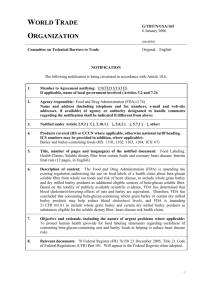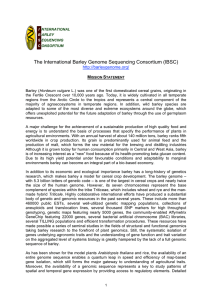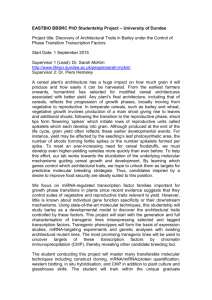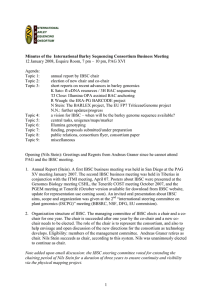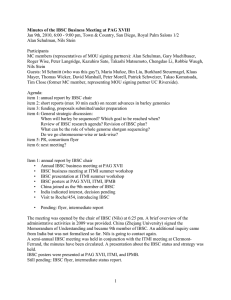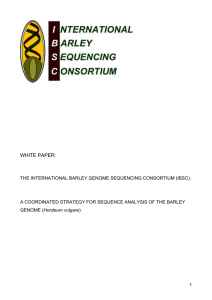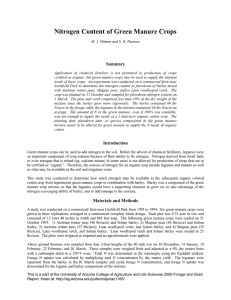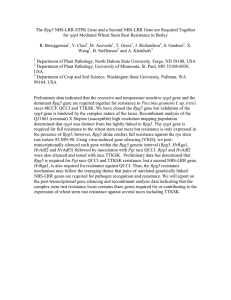Document 10693975
advertisement
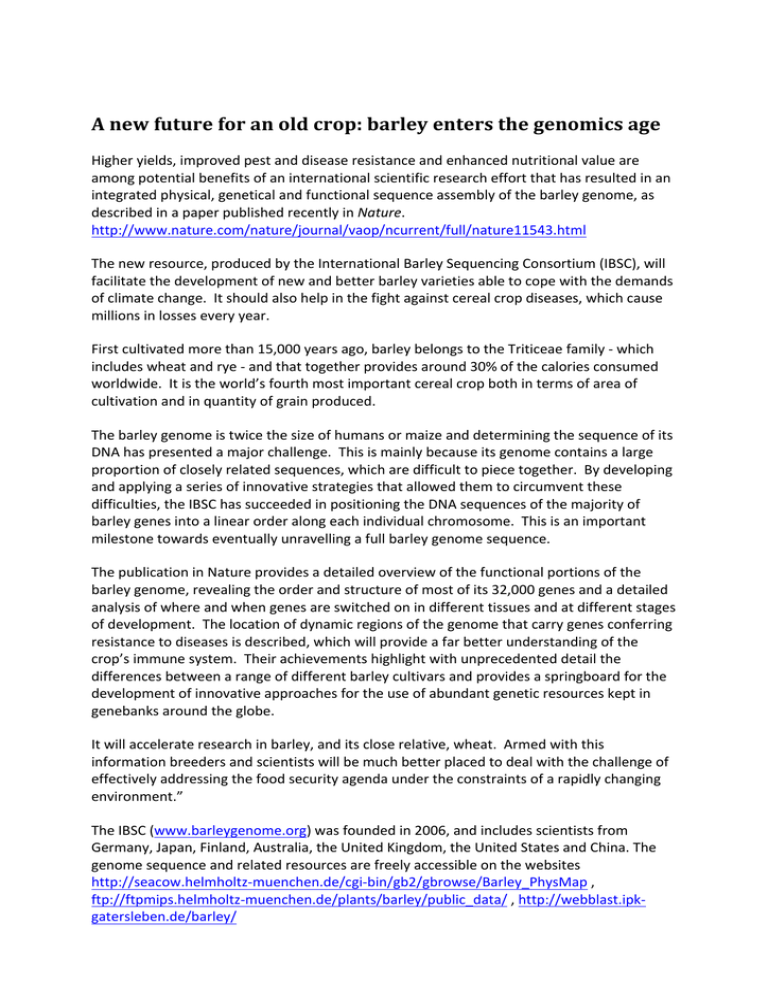
A new future for an old crop: barley enters the genomics age Higher yields, improved pest and disease resistance and enhanced nutritional value are among potential benefits of an international scientific research effort that has resulted in an integrated physical, genetical and functional sequence assembly of the barley genome, as described in a paper published recently in Nature. http://www.nature.com/nature/journal/vaop/ncurrent/full/nature11543.html The new resource, produced by the International Barley Sequencing Consortium (IBSC), will facilitate the development of new and better barley varieties able to cope with the demands of climate change. It should also help in the fight against cereal crop diseases, which cause millions in losses every year. First cultivated more than 15,000 years ago, barley belongs to the Triticeae family -­‐ which includes wheat and rye -­‐ and that together provides around 30% of the calories consumed worldwide. It is the world’s fourth most important cereal crop both in terms of area of cultivation and in quantity of grain produced. The barley genome is twice the size of humans or maize and determining the sequence of its DNA has presented a major challenge. This is mainly because its genome contains a large proportion of closely related sequences, which are difficult to piece together. By developing and applying a series of innovative strategies that allowed them to circumvent these difficulties, the IBSC has succeeded in positioning the DNA sequences of the majority of barley genes into a linear order along each individual chromosome. This is an important milestone towards eventually unravelling a full barley genome sequence. The publication in Nature provides a detailed overview of the functional portions of the barley genome, revealing the order and structure of most of its 32,000 genes and a detailed analysis of where and when genes are switched on in different tissues and at different stages of development. The location of dynamic regions of the genome that carry genes conferring resistance to diseases is described, which will provide a far better understanding of the crop’s immune system. Their achievements highlight with unprecedented detail the differences between a range of different barley cultivars and provides a springboard for the development of innovative approaches for the use of abundant genetic resources kept in genebanks around the globe. It will accelerate research in barley, and its close relative, wheat. Armed with this information breeders and scientists will be much better placed to deal with the challenge of effectively addressing the food security agenda under the constraints of a rapidly changing environment.” The IBSC (www.barleygenome.org) was founded in 2006, and includes scientists from Germany, Japan, Finland, Australia, the United Kingdom, the United States and China. The genome sequence and related resources are freely accessible on the websites http://seacow.helmholtz-­‐muenchen.de/cgi-­‐bin/gb2/gbrowse/Barley_PhysMap , ftp://ftpmips.helmholtz-­‐muenchen.de/plants/barley/public_data/ , http://webblast.ipk-­‐ gatersleben.de/barley/



